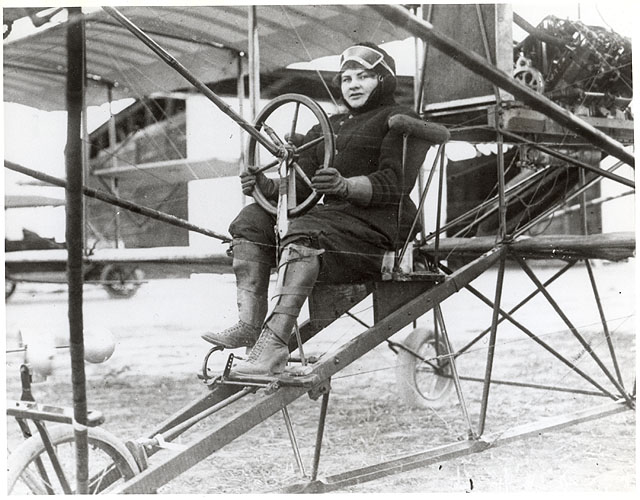Accidental first
It’s not absolutely certain when Blanche Stuart Scott became the first American woman to pilot an airplane (it may have been September 2, 1910, or September 4—Scott herself gave different dates). But either way, it was an accident.The 25-year-old Scott, who also went by the name of Betty, had won f…

It's not absolutely certain when Blanche Stuart Scott became the first American woman to pilot an airplane (it may have been September 2, 1910, or September 4—Scott herself gave different dates). But either way, it was an accident.
The 25-year-old Scott, who also went by the name of Betty, had won fame earlier that year as the first woman to cross the country by automobile. When Glenn Curtiss's press agent approached her about learning to fly, she said yes. Curtiss himself, though initially reluctant to teach a woman, agreed to be her instructor.
Years later, Scott wrote her account of the fateful day in Hammondsport, New York:
It was customary in those days to have the student "cut grass" for many days, to become thoroughly familiar with the controls. As the plane was a one seater, no instructor would go along to teach the student. There was a governor on the engine to hold the power down and keep the plane on the ground. My fourth trip down the field "grass cutting" caught a side wind and the plane soared about ten feet in the air. It felt like a hundred feet. Curtiss was alarmed, because at that stage in aviation an injured or killed woman would have been the worst publicity. However, and perhaps because I didn't know enough to be afraid, I landed safely. Two days later, I asked Curtiss to take the governor off the engine, and he finally agreed. I stepped into the little old 35 hp ship, waved a flippant good-bye and took right off, flew around the field and made a good landing. I have never found that any woman antedated that flight.Scott made her public airshow debut in early October, and went on to a short career of daredevil flying as "The Tomboy of the Air," earning as much as $5,000 a week. Her specialty was a "Death Dive," in which she would plummet straight down from a height of 4,000 feet and level off within 200 feet of the ground. By 1916, though, she was disenchanted with the crowd's fascination with (eagerness for?) fatal crashes, and gave up flying for a career in radio.